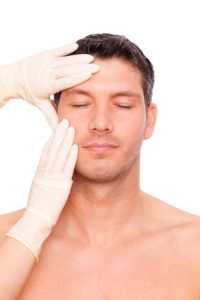Moles
Although moles are usually harmless, but you should know how to monitor moles by yourself. In some cases they can become cancerous, causing melanoma. For this reason, it is important to regularly examine your skin for any moles that change in size, color, shape, sensation, or that bleed. Suspicious or abnormal moles or lesions should always be examined by your dermatologist.
What to Look For
Remember the ABCDE's of melanoma when examining your moles. If your mole fits any of these criteria, you should visit your dermatologist as soon as possible.
- Asymmetry. One half of the mole does not match the other half.
- Border. The border or edges of the mole are poorly defined or irregular.
- Color. The color of the mole is not the same throughout or has shades of tan, brown, black, blue, white or red.
- Diameter. The diameter of a mole is larger than the eraser of a pencil.
- Evolution. The mole is changing in size, shape, or color.
How to Monitor Moles by Yourself
Moles can appear anywhere on the skin, including the scalp, between the fingers and toes, on the soles of the feet, and even under the nails. The best way to detect skin cancer in its earliest, most curable stage is by checking your skin regularly and visiting our office for a full-body skin cancer screening. Use this guide to perform a self-exam.
- Use a mirror to examine your entire body, starting at your head and working your way to the toes. Also be sure to check difficult to see areas, including between your fingers and toes, the groin, the soles of your feet and the backs of your knees.
- Pay special attention to the areas exposed to the most sun.
- Don't forget to check your scalp and neck for moles. Use a handheld mirror or ask a family member to help you.
- Develop a mental note or keep a record of all the moles on your body and what they look like. If they do change in any way (color, shape, size, border, etc.). Or if any new moles look suspicious, visit your dermatologist right away.
Skin cancer has a high cure rate if detected and treated early. The most common warning sign is a visible change on the skin, a new growth, or a change in an existing mole. Depending on the size and location of the mole, dermatologists may use different methods of mole removal. A body check performed by a dermatologist can help determine whether the moles appearing on the body are pre-cancerous or harmless. Read more in our blog posts.












